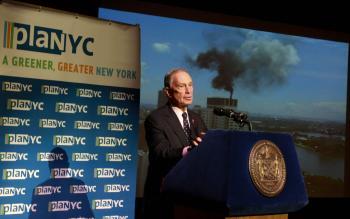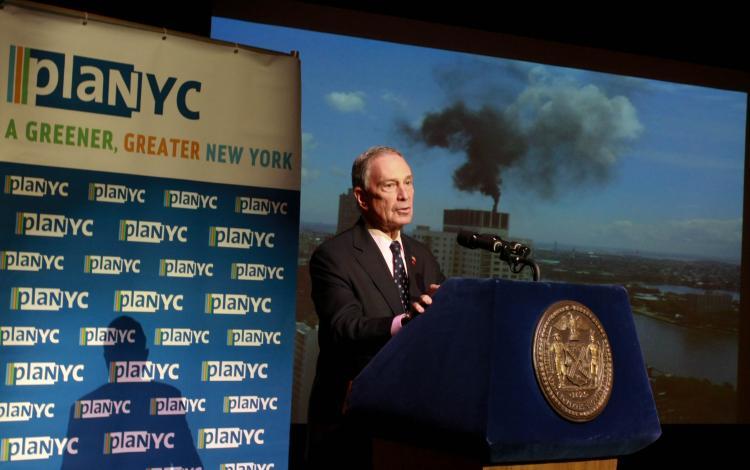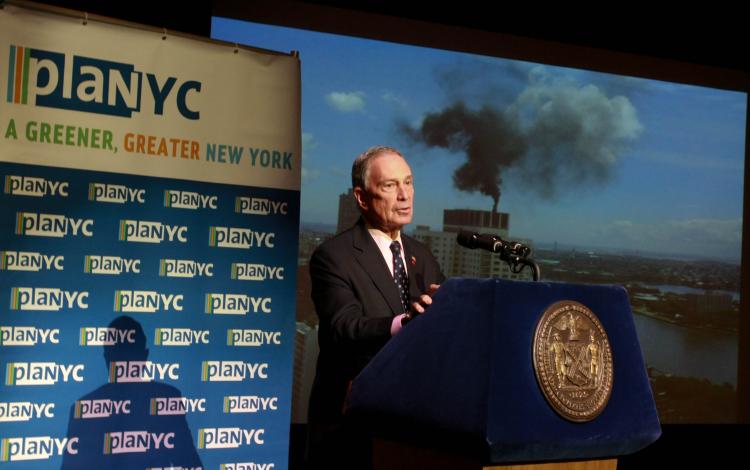NEW YORK—Mayor Michael Bloomberg introduced new initiatives to the city’s long-term sustainability plan, PlaNYC, on Thursday in anticipation of Earth Day on Friday. The new initiatives include tougher requirements on the types of heating oil used and outreach for help from New Yorkers.
Making a vast metropolis like New York City green is a monumental and difficult task. The mayor acknowledged some failure to meet objectives, but touted the headway made over the last four years to achieve two-thirds of the PlaNYC milestones set for 2009. The plan was established in 2007, along with legislation that it must be updated every four years.
Bloomberg presented the first update on Thursday, while reviewing the progress made over the last four years.
In tough fiscal times, the journey to a sustainable future has certainly hit roadblocks. Updates to PlaNYC address funding shortages by maximizing community involvement and targeting the highest need areas to prioritize funding.
“It is in our power to give our city a sustainable future, but government can’t do it by itself; it needs every New Yorker,” said Bloomberg.
One of the updates to PlaNYC includes a social media tool called Change By Us.
Making a vast metropolis like New York City green is a monumental and difficult task. The mayor acknowledged some failure to meet objectives, but touted the headway made over the last four years to achieve two-thirds of the PlaNYC milestones set for 2009. The plan was established in 2007, along with legislation that it must be updated every four years.
Bloomberg presented the first update on Thursday, while reviewing the progress made over the last four years.
In tough fiscal times, the journey to a sustainable future has certainly hit roadblocks. Updates to PlaNYC address funding shortages by maximizing community involvement and targeting the highest need areas to prioritize funding.
“It is in our power to give our city a sustainable future, but government can’t do it by itself; it needs every New Yorker,” said Bloomberg.
One of the updates to PlaNYC includes a social media tool called Change By Us.
Change By Us is a networking platform that will go on the mayor’s office website. The platform will connect New Yorkers to agencies and nonprofits working to green the city. It will also empower residents to start up their own projects by connecting them with like-minded individuals. Bloomberg will also open the city’s coffers to support small-scale initiatives.
The funds will be targeted to the highest-need communities. A scorecard will determine a project’s level of priority based on demographic data, environmental factors, physical condition, community need, and the long-term maintenance required.
The mayor hopes to see federal and private funds rolling in to supplement the city’s investment. A federal investment of $37 million will be used to start up the new NYC Energy Efficiency Corporation. This agency will help the city’s buildings go green.
“[Regulations] tell building owners, ’thou shalt not,‘ but we have another message for building owners as well, and that is, ’we can help you do the right thing,'” said Bloomberg. NYC Energy Efficiency Corporation will work with Con Edison and National Grid to help the city’s nearly 1 million buildings convert their energy infrastructure to more environmentally friendly options.
New York City is unique in that 80 percent of greenhouse gases come from buildings and 20 percent from transportation—these figures are reversed in most other cities in the nation.
A small portion of buildings, about 1 percent, still use the dirtiest grades of heating oil—Number 6 and Number 4 oil types. PlaNYC will incentivize and ease the transition to natural gas and low-sulfur oil Number 2. NYC Energy Efficiency Corporation will work on this immediately, but PlaNYC also makes this conversion mandatory in the long run.
Bloomberg announced legislation on Thursday requiring all buildings using Number 6 oil to switch to cleaner fuel by 2015, and those using Number 4 to make the change by 2030.
Based on the experience of the last four years, some New Yorkers remain skeptical that PlaNYC will achieve its goals. Geoffrey Croft, president of NYC Park Advocates, says Bloomberg’s grand plans have largely been a publicity campaign without proper planning or feasibility.
“They were just cobbled together, really amateurish. He made promises at the time [2007] that we knew he was not going to be able to keep,” says Croft.
Croft points to the MillionTreesNYC initiative. The city has planted 430,000 of the million trees promised to go in the ground by 2017.
“There’s been so much waste. They’re so desperate to plant these trees; they’re planting them in places they shouldn’t be planted. We don’t have the money to take care of the trees we have, but it’s the P.R. value,” noted Croft. He says the city overlooked maintenance in a lot of PlaNYC’s initiatives, which was “a fatal flaw.”
The mayor declared in his announcement on Friday that he would make maintenance a priority. He also encourages New Yorkers to get involved in caring for the trees and other projects in their neighborhoods.







